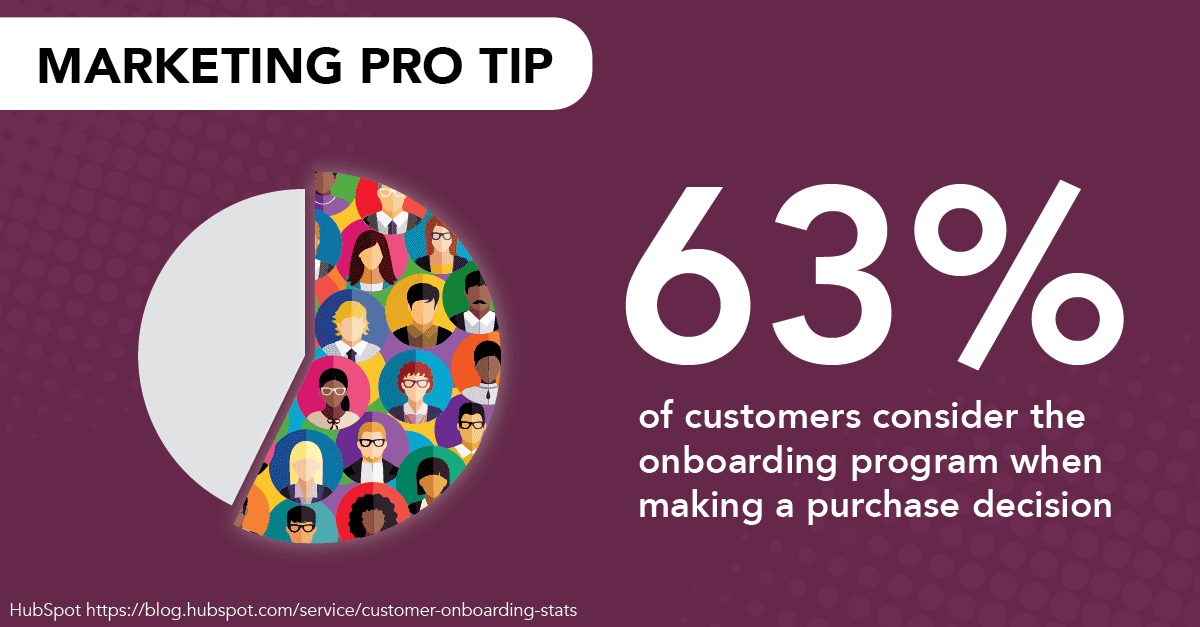With studies showing it can cost upward of 5x more to acquire a new client versus retaining existing ones, everyone in an organization has a vested interest in keeping clients happy.
One of the best places to start a strong retention strategy is during new client onboarding.
Because marketing teams already understand the buyer, now customer, and have the tools to reach them, it is only natural that marketing and customer success teams work together to onboard them effectively.
However, with everything else on a marketer’s to-do list, this collaboration opportunity can often be overlooked.
Here are client onboarding best practices our healthcare tech marketing agency has identified to help busy B2B marketers like you support your organization’s customer retention goals.
Customer success and marketing alignment
You hear a lot about sales and marketing alignment, but what about customer service and marketing alignment?
Before diving headfirst into a new client onboarding process, lay the ground rules.
Here are three ways to make sure you’re all on the same page:
- Establish a service line agreement (SLA) between departments. At its most basic, the SLA describes what each department can expect when working together and should identify the source of truth for customer information.
- Dedicate budget and resources to shared projects. Lack of dedicated resources to fund and staff projects can often be a friction-causing showstopper.
- Share your goals and measures for success. It’s likely marketing and customer success are tracking different goals, and that’s acceptable; the purpose of sharing is to ensure both parties can achieve the desired outcomes.
Five client onboarding best practices
Once you have an understanding of expectations and available resources, here are five ways marketing can add value to client onboarding.
- Create a branded welcome kit, video and email. Marketing owns your brand and has the skill set to distribute new customer materials quickly. Leaving this task to marketing also frees up time for the customer success team to focus on getting to know the client.
- Issue a press release announcing the partnership. By publicly announcing your partnership, you demonstrate to your new customer that you value the long-term relationship.
- Follow the new client’s organization on LinkedIn. Following your new customers’ LinkedIn company pages is an easy way to understand what is important to them. Additionally, tagging them in posts expands your brand exposure on the platform.
- Add contacts to your CRM to receive company news and announcements. Adding the right people to your database can often fall through the cracks, leaving customers unaware of new initiatives that may be of interest. A process and ownership for adding new customers should be included in the marketing-customer success SLA.
- Develop customer-facing content plans and assets. Creating customer-facing content can help your company build brand loyalty while paving the way for upsell and renewal conversations.
Pro-tip: Promote your company’s new client onboarding program in marketing collateral.
Why? 63% of customers consider onboarding when making a purchasing decision.
With marketing automation tools and workflows, marketing teams can streamline client onboarding communications so customer success teams aren’t continuously reinventing the wheel.
Further, on-brand content designed and written by marketing ensures brand equity throughout the process, delivering a more cohesive experience for your new clients.
Relationship building for future growth
A B2B marketing leader’s job does not end once a new customer is signed. And even though many marketers are tasked with delivering value and rolling out new products and services to existing customers, they are often excluded from client onboarding, making their job all the more difficult.
Two of the most cited reasons for customer churn include not understanding your product and not receiving value from it. Marketing and customer success teams can work together to avoid these issues, starting with an effective client onboarding program for future growth.



